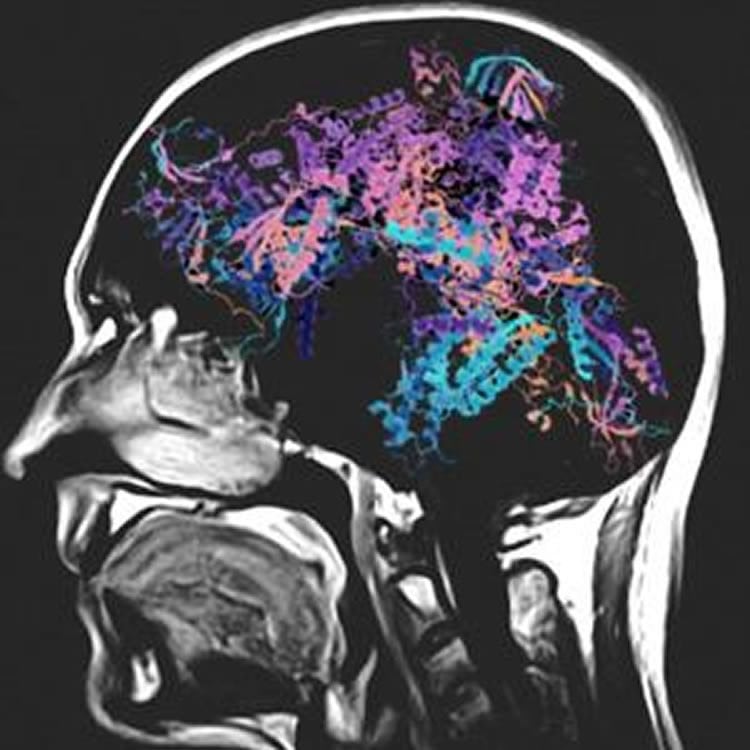Montréal researchers discover a new crucial gene associated with these orphan diseases.
Leukodystrophies are deadly neurodegenerative diseases that affect one in 7,000 children and remain incurable. These genetic diseases attack myelin or the “insulating rubber sheath” surrounding neurons, which leads to deteriorating health for affected children. Today, nearly 20 types of leukodystrophies have been characterized, but many other forms remain undefined, leaving nearly 40 per cent of families awaiting a diagnosis. An international research team, led by Dr. Geneviève Bernard from the Research Institute of the McGill University Health Centre (RI-MUHC) and Dr. Benoit Coulombe from the Institut de recherches cliniques de Montréal (IRCM), has identified a new gene associated with 4H leukodystrophy, one of the common forms of the disease. Their findings have been published in Nature Communications this week.
“We are finally starting to better understand this terrible disease. By discovering mutations on this new gene called POLR1C, which account for nearly 10 per cent of cases with this type of leukodystrophy, we now have a better idea of the impact they have on nervous system cells,” says one of the principal co-authors, Dr. Bernard, neurologist at the Montreal Children’s Hospital of the MUHC (MCH-MUHC) at the Glen site and assistant professor of Neurology and Neurosurgery at McGill University. “My team and I had paved the way in 2011 by identifying two genes (POLR3A and POLR3B) responsible for 4H leukodystrophy, which represent about 85 per cent of patients with the disease. However, approximately 15 per cent of patients with this type of leukodystrophy lack a genetic diagnosis. Until now, we did not know why mutations on the previously-discovered genes caused leukodystrophy.”
“Indeed, we found that mutations on POLR1C caused a problem in the assembly and cellular localization of an enzyme, RNA polymerase III, which plays a very important role in the proper functioning of our cells,” states the second principal co-author, Dr. Coulombe, full IRCM research professor and director of the Translational Proteomics research unit at the IRCM. “The cells’ lack of ability to produce RNA polymerase III compromises the genetic program controlled by this enzyme, thereby inducing a particularly harmful effect in specialized nerve cells.”
According to Dr. Coulombe, an important step has been taken, not only by identifying a new gene causing leukodystrophy, but also by shedding light on the molecular mechanism that allows these gene mutations to cause harm. “Understanding the mechanisms that affect the biogenesis of RNA polymerase III will now guide our efforts in the development of new diagnostic tools to better predict the evolution and severity of the disease, and new therapeutic tools to help sick children,” adds Dr. Bernard.

“The ability to diagnose this rare and incurable disease has an enormous impact on families, as it helps them better prepare for what lies ahead,” explains Dr. Bernard. This is the case for the family of Xavier, 8 years old, who was diagnosed with leukodystrophy in 2013. Since then, his family, who lives in Outaouais, visits Dr. Bernard at the MCH-MUHC every three months. “Even if we currently lack information to help our son, the research conducted by Dr. Bernard and her colleagues is very important to understand the causes of the disease and to find future treatments to help children with leukodystrophies,” says Xavier’s mother, Mrs. Émilie Lapointe.
Funding: The project was funded by the Canadian Institutes of Health Research and Dr. Coulombe’s Bell-Bombardier Chair of Excellence (IRCM). Dr. Bernard is a clinical research scholar (Junior 1) at the FRQS.
Source: Julie Robert – McGill University
Image Credit: Image is credited to Dr. Benoit Coulombe (IRCM)
Original Research: Full open access research for “Recessive mutations in POLR1C cause a leukodystrophy by impairing biogenesis of RNA polymerase III” by Isabelle Thiffault, Nicole I. Wolf, Diane Forget, Kether Guerrero, Luan T. Tran, Karine Choquet, Mathieu Lavallée-Adam, Christian Poitras, Bernard Brais, Grace Yoon, Laszlo Sztriha, Richard I. Webster, Dagmar Timmann, Bart P. van de Warrenburg, Jürgen Seeger, Alíz Zimmermann, Adrienn Máté, Cyril Goizet, Eva Fung, Marjo S. van der Knaap, Sébastien Fribourg, Adeline Vanderver, Cas Simons, Ryan J. Taft, John R. Yates III, Benoit Coulombe and Geneviève Bernard in Nature Communications. Published online July 7 2015 doi:10.1038/ncomms8623
Abstract
Recessive mutations in POLR1C cause a leukodystrophy by impairing biogenesis of RNA polymerase III
A small proportion of 4H (Hypomyelination, Hypodontia and Hypogonadotropic Hypogonadism) or RNA polymerase III (POLR3)-related leukodystrophy cases are negative for mutations in the previously identified causative genes POLR3A and POLR3B. Here we report eight of these cases carrying recessive mutations in POLR1C, a gene encoding a shared POLR1 and POLR3 subunit, also mutated in some Treacher Collins syndrome (TCS) cases. Using shotgun proteomics and ChIP sequencing, we demonstrate that leukodystrophy-causative mutations, but not TCS mutations, in POLR1C impair assembly and nuclear import of POLR3, but not POLR1, leading to decreased binding to POLR3 target genes. This study is the first to show that distinct mutations in a gene coding for a shared subunit of two RNA polymerases lead to selective modification of the enzymes’ availability leading to two different clinical conditions and to shed some light on the pathophysiological mechanism of one of the most common hypomyelinating leukodystrophies, POLR3-related leukodystrophy.
“Recessive mutations in POLR1C cause a leukodystrophy by impairing biogenesis of RNA polymerase III” by Isabelle Thiffault, Nicole I. Wolf, Diane Forget, Kether Guerrero, Luan T. Tran, Karine Choquet, Mathieu Lavallée-Adam, Christian Poitras, Bernard Brais, Grace Yoon, Laszlo Sztriha, Richard I. Webster, Dagmar Timmann, Bart P. van de Warrenburg, Jürgen Seeger, Alíz Zimmermann, Adrienn Máté, Cyril Goizet, Eva Fung, Marjo S. van der Knaap, Sébastien Fribourg, Adeline Vanderver, Cas Simons, Ryan J. Taft, John R. Yates III, Benoit Coulombe and Geneviève Bernard in Nature Communications. Published online July 7 2015 doi:10.1038/ncomms8623






